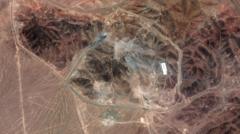The director of the CIA has asserted that the recent US strikes on Iranian nuclear facilities have had a "severe" impact, returning Iran's nuclear ambitions back by years. This claim diverges sharply from a recently leaked Pentagon report suggesting that the core components of Iran's nuclear capabilities remained largely intact. CIA Director John Ratcliffe emphasized that although critical sites were destroyed, complete elimination of Iran's nuclear program was not achieved.
President Donald Trump stood by Ratcliffe's assessment, asserting via social media that the attack had resulted in the "obliteration" of Iranian capabilities, calling the media's representation of the impact "fake news." Furthermore, Trump indicated an upcoming press conference at the Pentagon to purportedly clarify the situation surrounding the US military operations.
The development occurred amid ongoing struggles for peace in the region, with a ceasefire taking hold between Israel and Iran following Trump’s negotiations. At a NATO summit in The Hague, Trump claimed the military action was "very severe" and expressed a desire to push Iran towards dismantling its nuclear ambitions in forthcoming talks. However, Iran has not confirmed any such discussions are taking place.
Ratcliffe stated that new intelligence suggested significant damage to three main Iranian nuclear facilities—Natanz, Fordo, and Esfahan—and that the rebuilding process would take considerable time. Notably, a statement from US National Intelligence Director Tulsi Gabbard aligned with this view, indicating extensive repairs would be necessary should Iran pursue re-establishment of its capabilities.
The military operation, involving 125 aircraft, targeted Iran's key sites, with satellite images revealing potential damage in the form of significant craters. Nevertheless, a leaked intelligence report from the Pentagon warned that these strikes had only delayed Iran’s nuclear program by a few months, an assessment made with "low confidence," leaving many observers skeptical.
Contradicting viewpoints continue to emerge from various sources. Iranian officials, including Foreign Ministry spokesman Esmail Baghaei, admitted to some damage but claimed that no permanent harm had occurred. Reports from Israeli authorities echoed claims of substantial destruction, particularly at the Fordo site.
Despite Iran's assertion that its nuclear program is purely for peaceful purposes, the ongoing tension and contradictory narratives underscore the complexities of international relations in the region, particularly concerning nuclear proliferation. As both intelligence assessments and political statements evolve, the long-term implications for Iran's nuclear ambitions remain uncertain.



















